Director General of Higher Education’s Visit to the Molina Building of PUI SKO ITS
On Friday 18 June 2021, the Director General of Higher Education of the Ministry of Education and Culture, Prof. Ir Nizam M.Sc. DIC Ph.D. IPU ASEAN made a visit to ITS in order to inaugurate the Integrity Zone di FSAD ITS. During his visit, accompanied by the rector of ITS, Prof. Dr.Ir. Mochamad Ashari M.Eng., and the assistant rectors 1, 2, 3, and 4, S as well as the director of DIKST, and other ITS officials, he also took the time to come to the Center for Excellence in Science and Technology ITS (PUI ITS) at National Electric Car Building (Molina) to see the work of ITS students and the facilities at PUI SKO ITS.
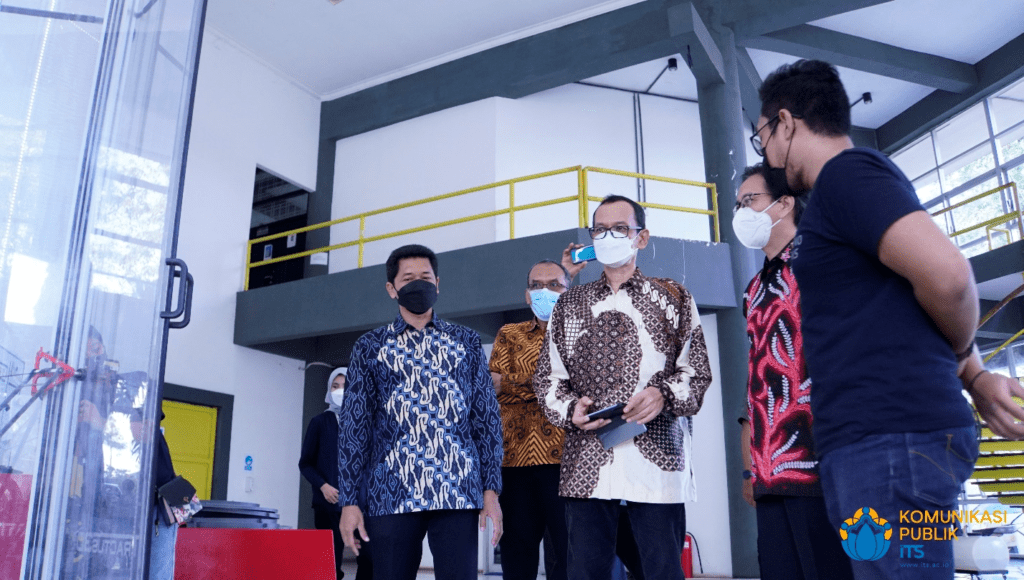
On his arrival, Mr. Nizam was explained about the student works displayed in the Molina Building along with the facilities it offers. Here Mr. Nizam was explained about the 3D Printing Facility using Tractus3D T3000 printer which has the ability to print all forms of 3-dimensional designs up to a maximum size of 1 meter in diameter and 1.45 meters in height with materials made of all kinds of 3D filaments from rigid plastic materials such as PLA to flexible materials such as TPU. As it happened, this machine was printing a prototype of an Airless Tyre which at the time was being designed by one of ITS professors.
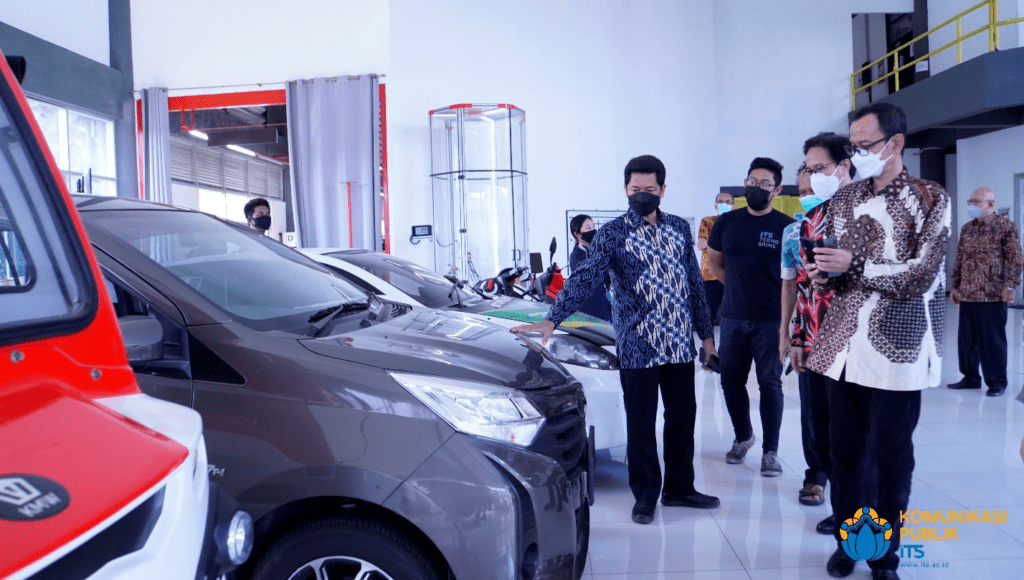
Furthermore, Mr. Nizam also took the time to look at the other works of PUI SKO ITS. Here he observed the BEV-converted Toyota Calya M/T. This work resulted from the conversion of Calya Tipe G M/T which normally uses Internal Combustion Engine (ICE) into an electric vehicle (BEV) using several components, such as electric motor, motor controller, battery pack and BMS which were developed by ITS Startup Company. Conversion emphasized on the side of performance, stability, and safety of the end-users.
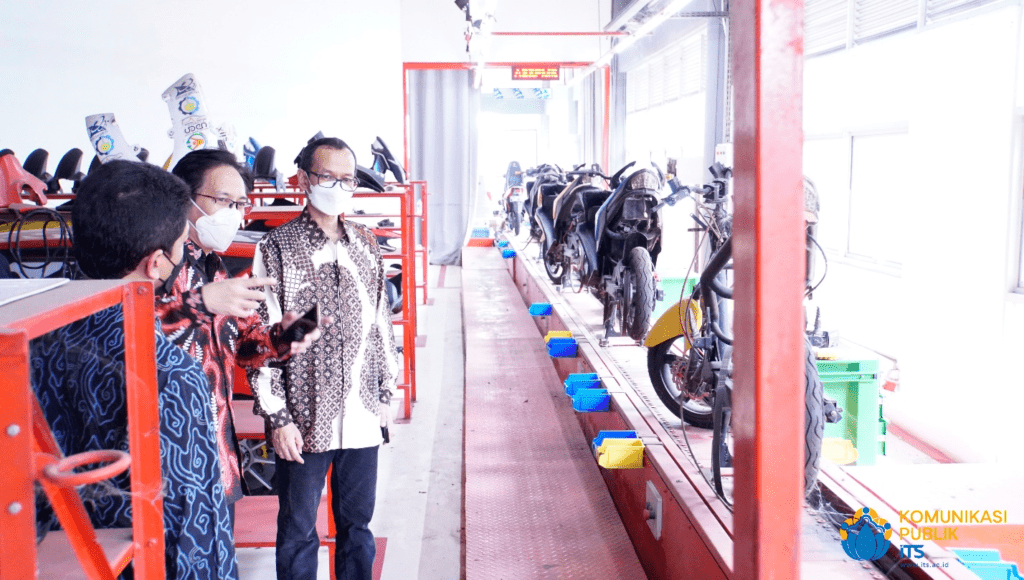
The Director General also visited the GESITS motorcycle teaching industry facility which was used for students to learn about the GESITS motorcycle manufacturing process. In the teaching industry, there are eight process stations which are chassis, steering system, drive train, accessories, two body installation stations, waiting, and lastly function and performance tests station. This teaching industry is designed to produce an electric motor with only a waiting time of about 5 minutes at each station so that the overall production process takes no more than 1 hour through modular assembly mechanism.





The next facility visited was a CNC machining facility. Here Mr. Nizam was shown two Haas CNC machines with different functions, type VF3 for milling, drilling, and tapering and type ST10 for lathe. These machines are capable of manufacturing various products, such as custom spareparts for electric motors such as casings, rotors, and fins with uncommon size and shape, as well as moldings for the casting process for glass products.
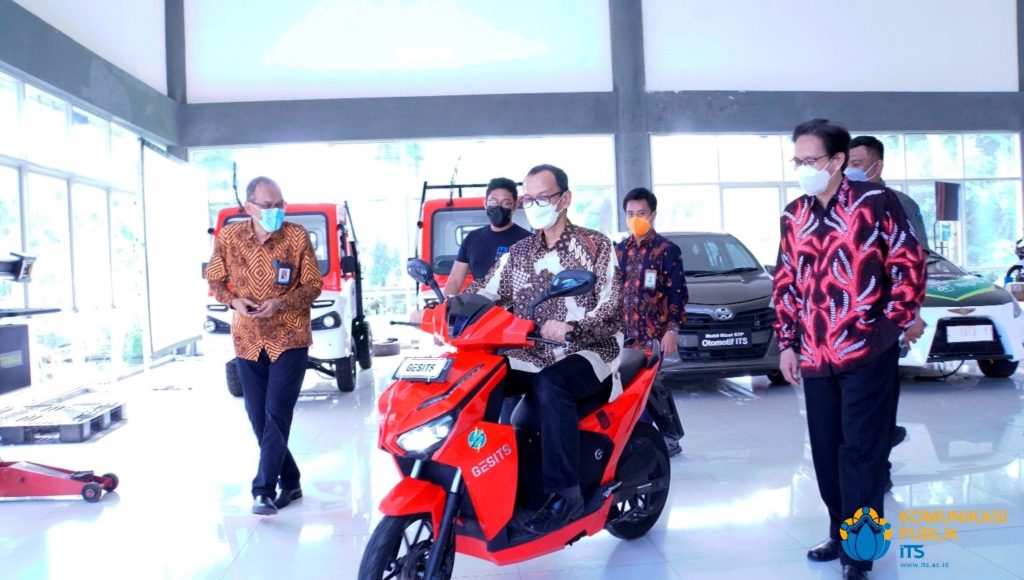
And at the end of his visit to the Molina Building, the Director General of Higher Education also had the opportunity to try out the performance of the GESITS electric scooter which had already started being sold commercially throughout Indonesia. Currently, GESITS electric scooters are produced and developed by PT WIMA, whose research and development are being worked in collaboration with ITS. The latest developments carried out at ITS are in the form of chassis and body designs that are created to suit ergonomics and user tastes. In addition, development is also carried out towards improving performance through the application of a regenerative braking system to reuse the energy wasted during the braking process.
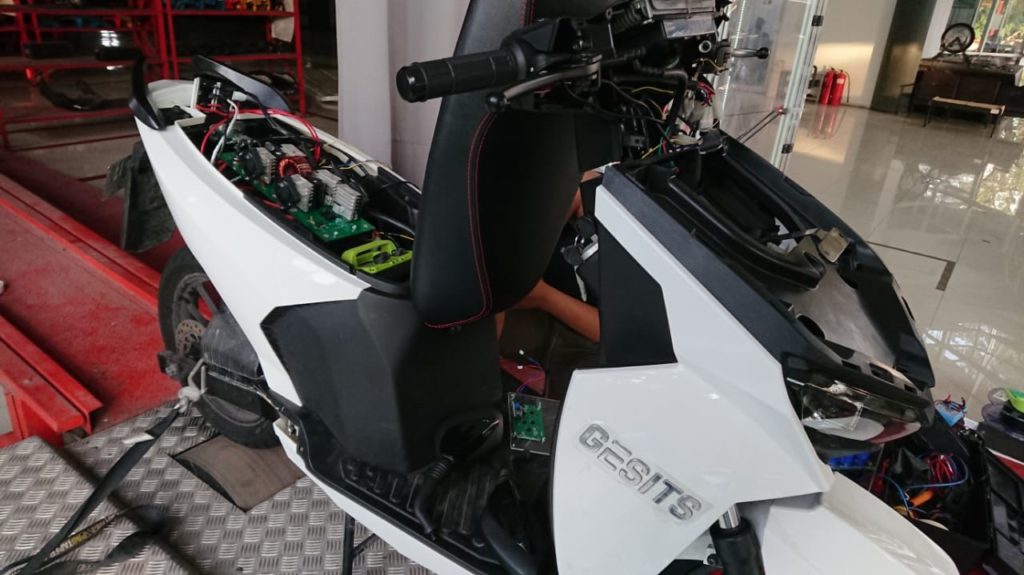
In addition, the development of energy management system that is integrated between internal and external conditions is also currently being worked upon. Internal conditions include operating mode, operating temperature, and battery SoC, while external conditions include mileage, and traffic conditions The goal of this development is to provide information to users related to the adequacy of battery energy mainly for distant travel purposes.
Related News
-
Through STP, ITS Strives to Strengthen Downstream Research Products
ITS Chancellor Prof Ir Bambang Pramujati ST MScEng PhD giving a speech at the STP National Seminar at the
June 18, 2021 04:06 -
EVITS Becomes an Environmentally Friendly Transportation Solution at the East Java Transportation Agency
Director of PT ITS Tekno Sains Dr Ir I Ketut Gunarta MT (left) when symbolically handing over the EVITS
June 18, 2021 04:06 -
BENGCARE, a Platform to Connect Workshops and Communities Digitally
ITS Campus, ITS News — The mismatch in price and quality in choosing a workshop is certainly a dilemma
June 18, 2021 04:06 -
SINOX-01, ITS – Unair Collaboration Supports Technology Downstreaming
ITS Chancellor Prof Ir Bambang Pramujati ST MScEng PhD delivering a speech at the opening of SINOX-01 which is
June 18, 2021 04:06





